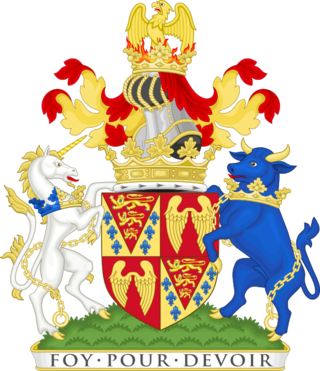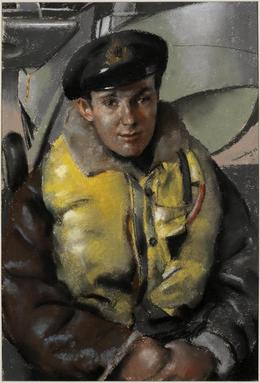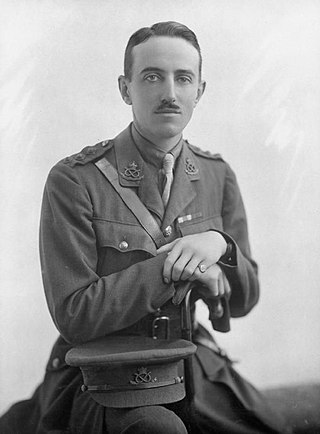Major General Sir Douglas Anthony Kendrew,, often known as Joe Kendrew especially during his rugby career, was an officer of the British Army who served in the Second World War and the Korean War, an international rugby player, and the 22nd Governor of Western Australia from 1963 to 1974.

Brigadier George Rowland Patrick Roupell, was a senior officer in the British Army and a recipient of the Victoria Cross, the highest award for gallantry in the face of the enemy that can be awarded to British and Commonwealth forces.

Evelyn Francis Edward Seymour, 17th Duke of Somerset was a British Army officer, landowner, peer, and for eight years Lord Lieutenant of Wiltshire. He was also a baronet. Between 1 May 1882 and 5 May 1931, he was styled as Lord Seymour.
Brigadier Charles George Vivian Tryon, 2nd Baron Tryon, was a British peer, British Army officer, and a member of the Royal Household.

Sir John Graham Kerr, known to his friends as Graham Kerr, was a British embryologist and Unionist Member of Parliament (MP). He is best known for his studies of the embryology of lungfishes. He was involved in ship camouflage in the First World War, and through his pupil Hugh B. Cott influenced military camouflage thinking in the Second World War also.

General Sir Thomas Sheridan Riddell-Webster, was a British Army officer who served as Quartermaster-General to the Forces during the Second World War.
Brigadier Sir Percy Robert Laurie was a British Army and police officer.
Brigadier Charles Esmond de Wolff CB CBE was a British Army officer.

Vice-Admiral Sir Henry Percy Douglas was a British naval officer who specialised in surveying and was Hydrographer of the Navy.
Brigadier-General Arthur Stedman Cotton, was a British Army officer.
Colonel Sir Thales Pease was a British Army and Navy ordnance officer.

Captain Frederick Stovin-Bradford was a Royal Navy officer and aviator in the Fleet Air Arm. During his career, Stovin-Bradford was involved in the sinking of the Italian submarine Iride, was one of the youngest officers to be promoted to the rank of captain since Nelson's time, and served as Staff Officer to the Flag Officer of Home Air Command in England and later Chief Staff Officer to the Flag Officer in charge of East Australia. His obituary in The Times described him as one of the most colourful personalities in the Fleet Air Arm.
Colonel Alfred John Chaston was a British Army officer and recipient of the Military Cross.

Captain Thomas Oloff de Wet CBE was a Senior British Officer in the Royal Navy. He was Principal Naval Transport Officer during the evacuation of Constantinople in 1923, Principal Sea Transport Officer in North China in 1927 and Officer in Charge of Sea Transport in Egypt between 1924 and 1926 and again between 1928 and 1933.
Major General Sir John Emilius Laurie, 6th Baronet, was a British Army officer.
Ernest Tristram Crutchley was a British civil servant who was the predecessor of the first British High Commissioner to Australia.
The 1924 Prime Minister's Resignation Honours were awards announced on 8 February 1924 to mark the exit of Prime Minister Stanley Baldwin, who resigned his first term as prime minister in late January.
Arthur Stanley Cantrell was an English first-class cricketer and Royal Marines officer. Cantrell was commissioned into the Royal Marine Artillery and served during the First World War. His military service with the Royal Marines lasted until his retirement in 1934, though he did later come out of retirement to serve in the Second World War. Cantrell also played first-class cricket for the Royal Navy Cricket Club between 1913–1929, making fourteen appearances.

Major-General Robert Francis Brydges Naylor, was a general officer in the British Army. During the Second World War he was Major-General in charge of Administration at the War Office from 1939 to 1941, Deputy Quartermaster-General from 1941 to 1943, Vice Quartermaster-General from 1943 to 1944, and Commander of the Line of Communications of the 21st Army Group in the North-West Europe Campaign of 1944–45.
FitzAlan George Drayson was an English first-class cricketer and an officer of the British Army.







